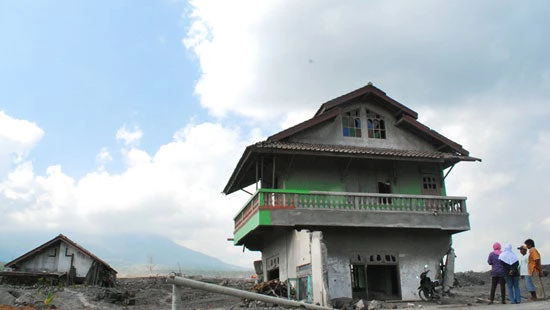Following the massive earthquake in Jogjakarta, Indonesia, in 2006, the city and surrounding areas were faced with having to build or rehabilitate about 300-thousand homes.
The government had the option of hiring 1,000 contractors to build 300 houses each. Or we could have 300 thousand people working to build one house each - their own homes.
With the Government of Indonesia in the lead, we took the latter approach in supporting Indonesia’s efforts to rebuild communities. This is the REKOMPAK way.
REKOMPAK – the name of the post-disaster housing reconstruction project first launched in Aceh following the deadly tsunami of 2004 -- put communities in the driver’s seat. REKOMPAK (an acronym translated from Indonesian as Community-based Housing Rehabilitation and Reconstruction, or Rehabilitasi dan Rekonstruksi Pemukiman Berbasis Masyarakat) recognizes communities as equal partners in the reconstruction process, involved from day one to work with local government and donors.
To put it simply – you become your own contractor for the houses you build.
And like organs of a body, REKOMPAK realizes that no organ is more important than the other. The spirit of oneness and unity embodies the community-based approach governing the project.
Here’s how REKOMPAK works. The targeted communities were organized into groups of 10 families, who are assigned to build 10 houses. The families are accompanied by a task force consisting of two technical experts (usually engineering or architecture students), one or two social facilitators (among them a community development specialist), one financial specialist and four construction supervisors. These taskforces assist about 5-6 housing groups.
The task force supports the communities, who are not necessarily familiar with reconstruction know-how. Communities are also given assistance on how to manage their spending and how to interact with other stakeholders.
For public infrastructure, the community collectively assisted to prepare a Community Settlement Plan outlining various plans related to land use, spatial plans, infrastructure, public facilities, disaster risk mitigation and livelihood programs, as necessary.
This model would not have worked in Aceh and Jogjakarta if a member of the communities felt dissatisfied or marginalized in the process. Unity in all aspect of the process was paramount in achieving effectiveness and efficiency of the reconstruction.
Transparency is also important. Facilitators and community volunteers first conduct a series of assessments, in order to determine a list beneficiaries. The list is then posted publicly in the villages, for a duration of 10 days. Any complaints or disputes are addressed through community meetings. It is during this time that families who did not make the list can request an assessment of their homes.
When REKOMPAK was first launched in Aceh in 2004, some stakeholders were wary with the idea of having victims of natural disasters taking part in the reconstruction process, as they are likely in mourning. But as the process unfolded, reconstruction efforts in Aceh have been lauded as amongst the most successful in modern history.
Winning the trust of the communities takes time. While in Aceh, I remember seeing one government facilitator who spent weeks visiting communities in Lambung village. Every day he showed up with his motorbike and spoke with community leaders, explaining the REKOMPAK process to the community until they agreed to take part. Well-trained and skilled facilitators are instrumental for the project’s success.
Community involvement also helped to promote accountability and minimize the risk corruption. By being involved in every step of the reconstruction process, communities can track procurement history, and gain access to the accounting of expenditures.
The REKOMPAK program in Jogjakarta built about 300,000 houses in 18 months. The Bank’s support directly contributed to the reconstruction of 20,000 houses, and over 200 villages. The Rekompak model has been replicated in various post-disaster scenarios across Indonesia. Lower costs on average are one reason, as REKOMPAK houses use local sources for materials and expertise, and salvaged materials when available.
Thanks to the collaborative spirit underpinning our endeavors, I am pleased to share that most of the families we worked with were very happy with their new homes. In Aceh, satisfaction levels were reported to be in the range of 80 to 90 percent, far higher than the initial target of 65 percent. You can see evidence of this satisfaction this video.
This sense of accomplishment imbued the communities with hope, and wouldn’t you be pleased as well with such an outcome?



Join the Conversation